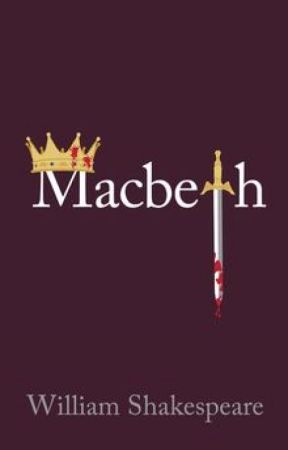Imagery
In the play Macbeth imagery can be broken down into 4 very distinct sections.
1 Darkness and the absence of light
2 Blood (and imagined blood)
BLOOD
These recurring images give the play a clear feeling of evil of magical forces closing in on a fast, tightknit world filled with cruelty ambition and violence. This play has an extreem sense of relentless speed, almost like a runawaytrain, and Shakespeare achieves this effect by various means. Many of the scenes throughout the play are short andshocking. this adds to the tension that builds up in the play over time. Some open in midstream, one in the middle of a letter, others in the middle of conversations. An image is a word of phrase that suggests a mental picture that we associate with one of our senses. This helps us as readers to visualize the setting of the play and adds to the eerie feeling we get throughout.
"Macbeth" is a bloody and violent play. Accordingly, theplay presents us with a litany of bloody events and images.From the appearance of the bloody sergeant in the secondscene to the closing moments of the play, we are presentedwith a continual vision of blood. Interestingly, one of the firstinstances of blood imagery in the play is associated withMacbeth
. We learn that his sword "smoked with bloodyexecution" and that he and Banquo seemed to "bathe inreeking wounds."All this is delivered to us by a sergeantwhose "gashes" cry out for help. Many of the supernaturalevents in the play are associated with blood. The secondwitch comes from the bloody task of killing Swine and thevisionary dagger in Act II, scene i is stained with "gouts ofblood." The imagery associated with these supernaturalevents impinges on the real world and is used to convey Macbeths overwhelming guilt he felt after the murder, the sight of his hands covered in blood is almost toomuch for him to bear: This is a sorry sight. And his "hangman's hands" shame him into realising that hiscrime is monstrous, and that his sense of guilt will never beassuaged:
Will all great Neptune's ocean wash this blood Clean from my hand? No, this my hand will rather The multitudinous seas in incarnadine, Making the green one red. Duncan is spoken of as being the fountainof his country's blood; his wounds "look'd like a breach innature for ruin's wasteful entrance". However, the imagery ofblood does not end with the murder of Duncan. The worldbecomes a "bloody stage" and accordingly, Macbeth invokesthe invisible and bloody hand of night to steel him to thetask of killing his friend. Banquo's death is described ingraphic detail that leaves little room for the imagination. Weare told of the "twenty trenched gashes" on his head andsubsequently Banquo's ghost shakes his "gory locks" atMacbeth. It is not surprising then that Macbeth should beconvinced that "blood will have blood." The banquet scene marks a turning point in the directionthat the play takes and also in way in which blood imagery isused by Shakespeare.
DARKNESS
in Macbeth the ambition for power leads to the dark and mysterious realm of witchcraft, murders, insomonia, and madness. And, the imagery used to inspire the experiences of darkness and evil are abundant.Certainly, the weather connotes sinister acts. For instance, the play opens with "fog and filthy air" as the three witches stir their cauldron and the captain describes the actions of the dauntless. And, throughout the play there are storms, dark castles in which the candles are out , and murders in the night. As prepares to "unsex" herself in order to encourage Macbeth in his deadly deeds, she asks that heaven not "Peep through the blanket of the dark" Enthralled by the prophecies of the "instruments of darkness" as they win him with "honest trifles," Macbeth spends many a night of "curtained sleep" .When and Lennox arrive at Macbeth's castle in , Scene 3, Lennox describes the night as "unruly," speaking of confusion. He describes the earth as shaking the livelong night." Ironically, Macbeth agrees, "'twas a rough night" .The many dark images of night and its predominance in the play clearly suggest that evil abounds.
Throughout the entire play Shakespeare uses pathetic fallacy to create the setting for the entirety of the play. This creates the evil setting and it is very clear from the first scene that darkness was going to be a major factor throughout the play. "Fair is foul, and foul is fair, hover through Fog and Filthy air" this scene is introduced to use through the sound of thunder as the witches gather and make their evil prophecy.

YOU ARE READING
MACBETH
Historical FictionAs I am a student I have done more than enough study on Shakespeare. This year we studied Macbeth and I believe that I could help by putting my notes on here for anyone who needs them. They consist of "key quotes" and a general break down of the...
